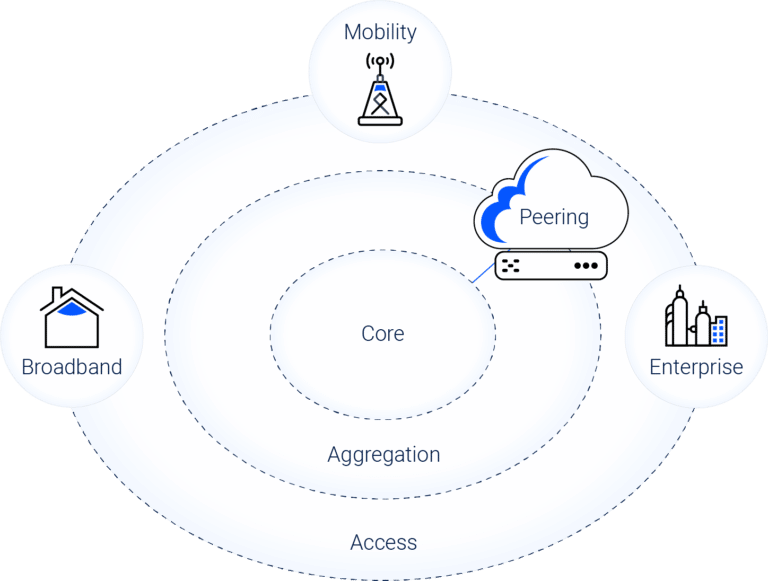What is Network Peering?
Peering is a critical part of every service provider network. Peering, also referred to as network peering or Internet peering, is a way for exchanging traffic with another party (usually a transit provider or content provider) via a direct connection.
Types of Peering Connections
There are several types of peering connections.
- Private peering
Private peering is the simplest and most commonly used form of peering, involving direct interconnection between the networks involved in order to facilitate shared access. - Public peering
Public peering is more complex than private peering, usually occurring in shared spaces, particularly colocation facilities. - Traditional Peering
Traditional peering arrangements are settlement-free, though some fixed costs are still involved, including peering ports, colocation, power, and various equipment costs. - Paid Peering
Paid peering is where one network operator pays another for access. Paid peering only grants the customer access to that provider’s network. Paid peering is very different from traditional settlement-free peering, lacking a shared arrangement involving shared leverage between parties.
Peering Requirements
To establish peering, there are several steps involved.
- Need to have a connection to an exchange point – possibly a router or metro Ethernet circuit that connects equipment in one facility to the exchange point switch.
- May need to pay the exchange operator for the switch port, for space in the colocation facility, and for connectivity from the metro Ethernet provider.
- Need to manage the peering arrangement – and be in contact with all networks involved to facilitate the setup.
- Need to provide a set of rules for peering to decide who to peer with and what requirements need to be met for any arrangements.
Benefits of Network Peering
There are a number of benefits from network peering.
- Lower costs
By routing a portion of traffic through peered networks, a Service Provider saves money on IP Transit costs (the cost of purchasing bandwidth from a telecom carrier). - Better user experience
Peering allows for a more direct path between two networks, thus reducing the distance that data needs to travel. This results in lower latency and improved user experience. - Increased redundancy and greater resiliency
The more peers on the network, reduces dependence of one or more transit providers. So if a transit route goes down, the traffic can be re-routed where available peer networks sit.
Improved Network Performance
Local traffic can result in faster connections between the two peered networks, and a direct path can alleviate possible bottlenecks. Beyond typical problems, peering increases the routing control available to an ISP.
Larger Bandwidth Capacity
Peering allows for extremely large amounts of traffic to be distributed across many networks.
Disaggregated routing for internet peering
The network peering function is a critical part of the networking infrastructure. It requires scaling in terms routing table exchange and network architecture evolution, which calls for additional peering points in different locations of the network. addresses these challenges by changing the network paradigm – building networks like cloud – scalable, elastic, cost-efficient and simple to manage.

Internet peering, together with the right routing infrastructure can impact the overall costs of the network. While traditional router vendors require their customers to buy high-end, expensive routers, to support peering traffic, the disaggregated routing model allows service providers the flexibility to use lower end routers to support peering traffic at scale.
Based on a distributed disaggregated chassis architecture, disaggregated peering solutions allows service providers to implement a feature rich peering network function over a standalone box or as a part of a cluster which also implements core, aggregation or edge functionality.
Additional Networking Resources





